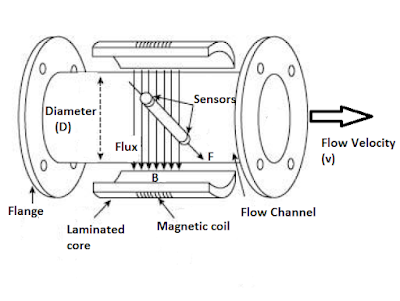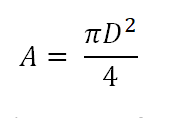Linear variable differential transformer (LVDT) is an inductive transducer that is commonly used to translate linear motion into electrical signals.
An illustration of LVDT circuit is shown below:
 |
Fig 1.0 LVDT
connection circuit |
The transformer
consists of a single primary winding P and two secondary windings S1
and S2 wound on a cylindrical former. A sinusoidal voltage of
amplitude 3 to 15 volt and frequency 50 to 20 kHz is employed to excite the
primary winding. The two secondary windings have equal number of turns and are
identically placed on either side of the primary winding.
The primary
winding is connected to an alternating current source. A movable soft-iron core
is placed inside the former. The displacement to be measured is applied to the
arm attached to the soft iron core. The core is usually made of high
permeability, nickel iron. This is slotted longitudinally to reduce eddy
current losses. The assembly is placed in a stainless steel housing to provide
electrostatic and electromagnetic shielding. The frequency of ac signal applied
to primary winding can be between 50 Hz and 20 kHz.
As the
primary winding is excited by an alternating current source, it produces an
alternating magnetic field which in turn induces alternating voltages in the
two secondary windings.
The output
voltage of secondary S1 is ES1 and that of secondary S2
is ES2. In order to convert the outputs from S1 and S2
into a single voltage, the two secondary S1 and S2 are connected
in series opposition. The differential output voltage is:
E0 = ES1 – ES2
Operation of LVDT
When the
core is at its normal (NULL) position, the flux linking with both the secondary
windings is equal and hence equal voltages are induced in them. Therefore at
null position: ES1 = ES2. Thus, the output voltage E0
is zero at null position.
If the core is moved to the left of the null position, more flux links with S1 and less with winding S2. Correspondingly, output voltages ES1 is greater than ES2. The magnitude of output voltage is thus,
E0
= ES1 – ES2 and we can say, it is in phase with primary
voltage.
In the same way, when the core is moved to the right of the null position ES2 will be more than ES1. Therefore the output voltage
E0 =
ES1 – ES2 and 180° out of phase with primary voltage.
The amount
of voltage change in either secondary winding is proportional to the amount of
movement of the core. Thus, we have an indication of amount of linear motion. By
noticing whether output voltage is increased or decreased, we can determine the
direction of motion.
Related: Transducers and Sensors
Merits of LVDT
- Output is quite high. Hence, immediate amplification is not necessary.
- Output voltage is step-less and hence the resolution is very good.
- The sensitivity is high (about 40 V/mm).
- It does not load the measured mechanically.
- Linearity is good up to 5 mm of displacement.
- It consumes low power and low hysteresis loss.
The Limitations of LVDT
- It is affected by stray electromagnetic fields. Thus, proper shielding of the device is required.
- LVDT has large threshold.
- The ac inputs generate noise.



